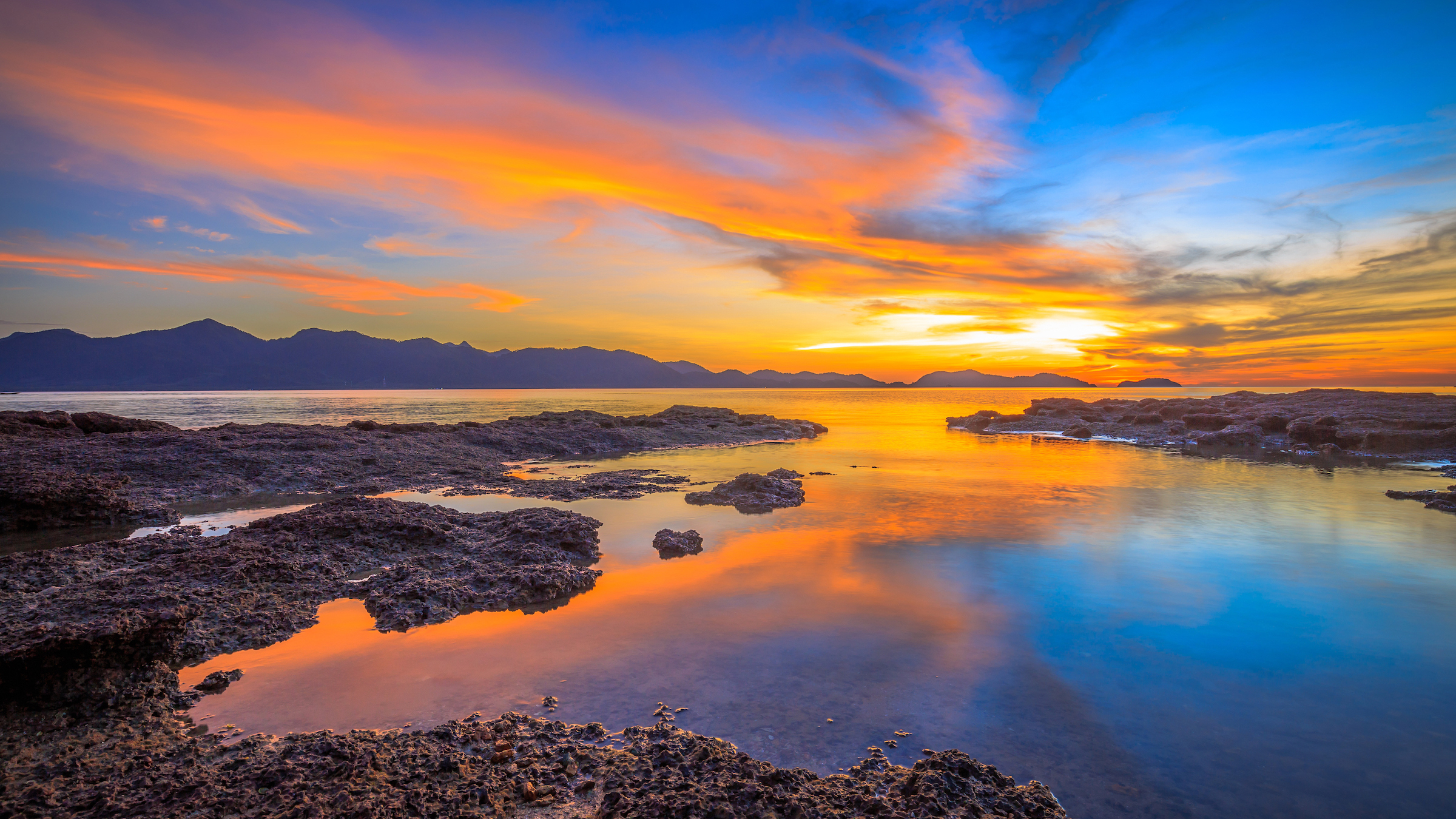Where on Earth does the sun rise first?
Where does the first sunrise happen every day and which place sees the first sunrise of the New Year?

On our rotating, spherical planet, the sun is endlessly creeping over the horizon. But where does the first sunrise of the day happen? And with the sun quickly setting on 2022, which place experiences the first moments of light in the New Year?
From a physical perspective, there really isn't a "first" sunrise, according to Cameron Hummels, a postdoctoral scholar of theoretical astrophysics at Caltech. There's just a series of perpetual sunrises happening farther and farther to the west — no true first, no true last.
But to keep track of time, humans have established an arbitrary time-keeping system, including time zones and the international date line, which marks the line on Earth where one day ends and the next begins. "So the agreed-upon 'first' sunrise of the day takes place at the international date line," Hummels said.
The international date line runs through the middle of the Pacific Ocean, mostly along the 180th-longitude line. While it's mostly a straight line, there are some spots where it deviates so as to avoid splitting a country into two time zones, or for political and economic reasons. For instance, the international date line juts out nearly 2,000 miles (3,200 kilometers) east around Kiribati, a collection of islands straddling the equator. Kiribati has the earliest time zone on Earth, UTC +14, so, "for much of the year, like near the equinoxes, Kiribati should have the first sunrise of the day," Hummels said. Specifically, Kiribati's easternmost uninhabited island, Millennium Island, also known as Caroline Island, is often the first place on Earth to welcome the sun.
Related: What's the most sunsets you could see on Earth in one day?
However, that's not always the case. Earth has a slight tilt of 23.5 degrees, so the way sunlight falls on the planet changes over the course of the year. During the southern summer solstice and northern winter solstice on Dec. 21 or Dec. 22, the sun preferentially shines on the Tropic of Capricorn in the Southern Hemisphere; and the South Pole and most of Antarctica are illuminated 24 hours a day.

"But if you sneak just above 66.6 degrees South, the sun will just dip under the horizon briefly before producing a sunrise a few minutes after midnight," Hummels said. Young Island, an uninhabited island claimed by New Zealand, will therefore sometimes see the first sunrise in the days and weeks around the solstice, including Jan. 1.
Get the world’s most fascinating discoveries delivered straight to your inbox.
However, Young Island only gets the first sunrise of the day 10% to 15% of the time, according to the U.S. Naval Observatory. The rest of the time, the light-refracting effects of Earth's atmosphere are so strong that you can continue to see sunlight on Young Island even after the sun dips below the horizon, preventing a true sunset or sunrise. When this happens, Dibble Glacier, a peninsula on the Antarctic coastline, gets the first sunrise of the day during the solstice.
Around the northern summer solstice and southern winter solstice on June 20 to June 22, the sun shines more directly on the Northern Hemisphere than the Southern Hemisphere. So, the first sunrise will be farther north. "The International Date Line snakes between Russia and Alaska traversing the Bering Strait," Hummels said. The dateline bisects a pair of islands called the Diomede Islands. Big Diomede Island belongs to Russia, and Little Diomede is part of the U.S. In the weeks and even months leading up to June 21, the Russian island sees the first sunrise in the world, Hummels said.

Donavyn Coffey is a Kentucky-based health and environment journalist reporting on healthcare, food systems and anything you can CRISPR. Her work has appeared in Scientific American, Wired UK, Popular Science and Youth Today, among others. Donavyn was a Fulbright Fellow to Denmark where she studied molecular nutrition and food policy. She holds a bachelor's degree in biotechnology from the University of Kentucky and master's degrees in food technology from Aarhus University and journalism from New York University.

